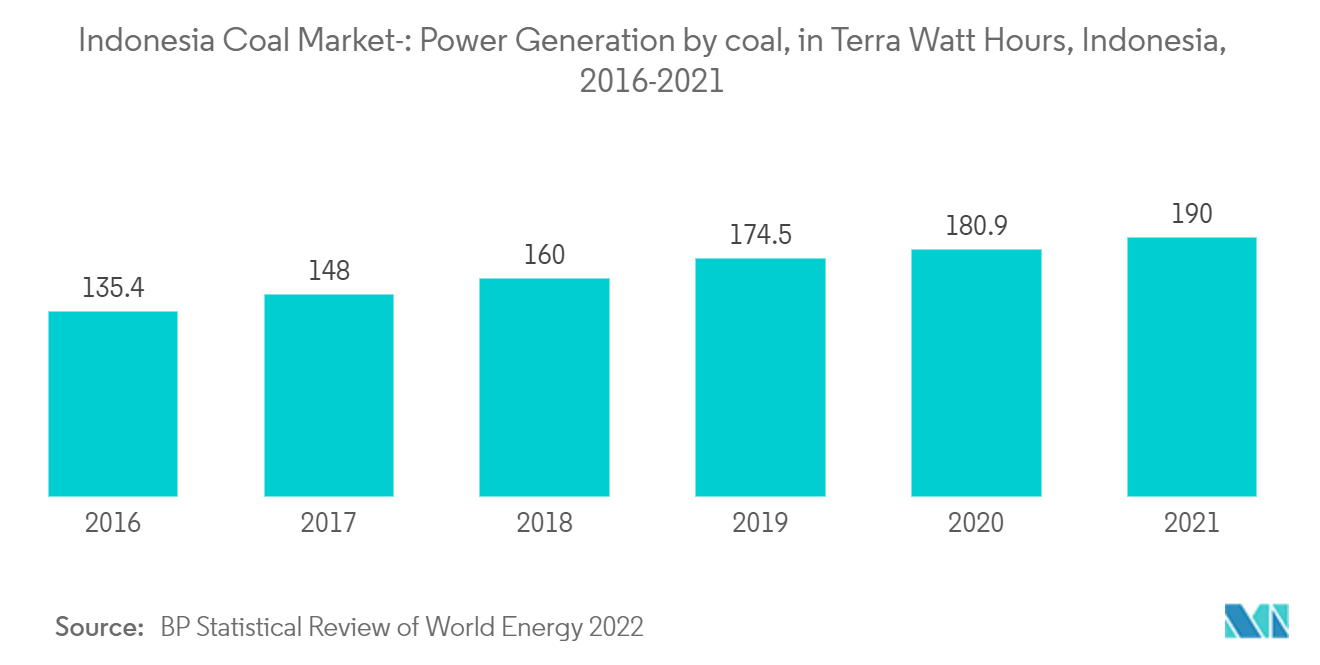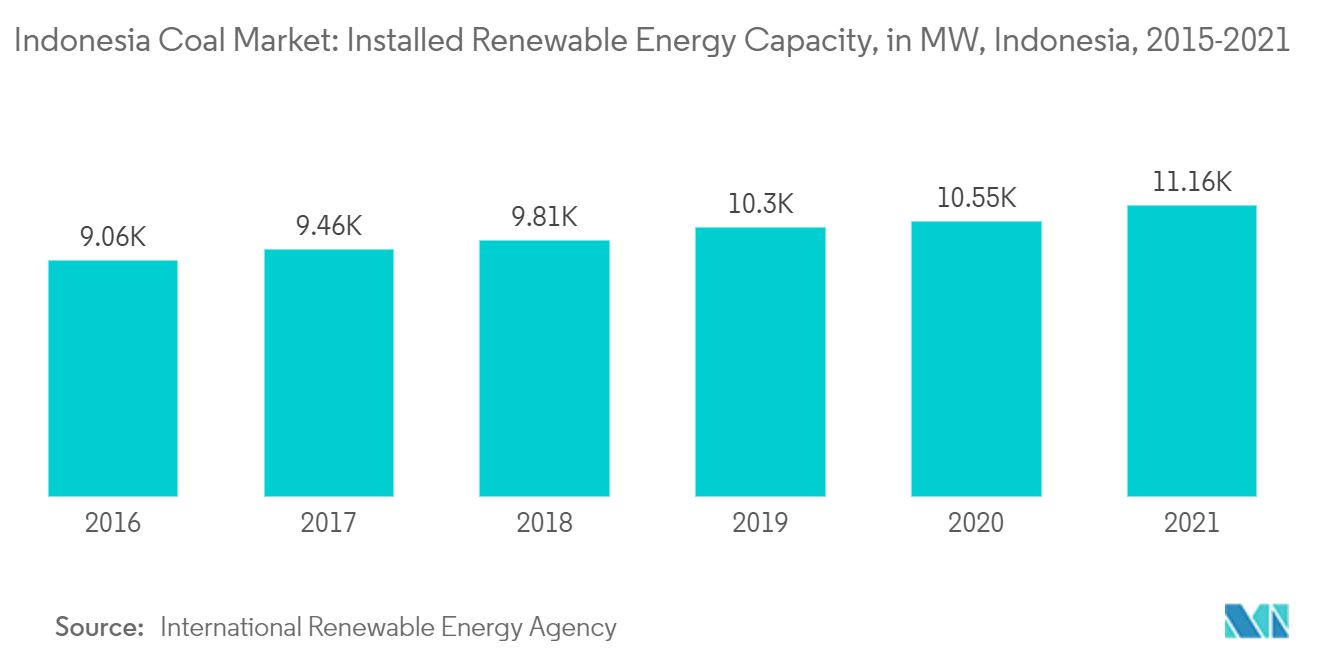Market Trends of Indonesia Coal Industry
This section covers the major market trends shaping the Indonesia Coal Market according to our research experts:
Electricity Industry to Dominate the Market
- According to 2021 figures, Indonesia possesses 3.2% of the global coal reserves, with around 34,869 million tons of coal reserves. As of 2021, 66% of Indonesia's total coal reserves were Anthracite and Bituminous coal, with the remaining 34% sub-bituminous coal and lignite.
- Power plants that utilize coal for electricity prefer to purchase fuel that is energy-efficient, inexpensive, and has less sulfur as part of a strategy to minimize greenhouse gas emissions. Indonesian coal output is tilted toward lower-energy, less-expensive sub-bituminous coal.
- The Indonesian economy has been expanding in recent years. As a result of increased urbanization and the increased number of commercial and industrial buildings requiring greater access to energy, demand and electricity consumption have also increased.
- In 2021, Indonesia generated 309.4 TWh of electricity. Out of that, 190 TWh was generated through coal, constituting 60% of the total electricity generation. Due to increased activities, the demand for increased electricity is expected to be met by coal in the short term.
- Even though the Indonesian government plans to stop building new coal power plants from 2023, the already approved power plants will be built to aid in the growth of the coal market.
- Thus, owing to the above points, the electricity industry is expected to dominate the coal market in Indonesia.

Increasing Adoption of Renewable Energy to Restrain the Market
- The electricity demand in the country is increasing, leading to an increase in the installation of different electricity generation. The majority of power generation in the country is from fossil fuels. Due to increasing regulations on emissions control, the government of India has started its energy transition from conventional sources to renewable energy sources. Thus, it is estimated that most power generation installations will be derived from renewable energy sources in the coming years.
- Between 2017 and 2021, the renewable energy installed capacity increased by almost 18%. The total renewable energy installed capacity was 11,157 MW in 2021 compared to 9459 MW in 2017. The growth rate is expected to increase furthermore during the forecasted period.
- The Indonesian government set a renewable energy target of 23% and 31% of the total electricity generation by 2025 and 2050, respectively. Currently, around 13% of power generation nationwide comes from renewable energy resources, mainly hydroelectric and geothermal power production.
- Indonesia is rich in solar power, with a potential of around 207 GW, according to the Ministry of Energy and Mineral Resources (MEMR). The Indonesian government is prioritizing the development of renewable energy sources. Therefore, Indonesia is witnessing an increasing adoption of renewable energy sources to fulfill its electricity demand and lower its emissions.
- Moreover, in September 2022, Indonesia announced plans to shut down 15 GW of coal-powered plants in the next three decades to reduce their carbon emission. It is expected that this will not only reduce carbon emissions but also increase the renewable energy installations in the country.
- For instance, in November 2022, Saudi energy firm ACWA Power announced that they had secured a contract from the Indonesian state-owned utility PT Perusahaan Listrik Negara (PLN) to build two floating solar photovoltaic (PV) power projects. The contract covers the 60MWac Saguling project and Singkarak, a floating solar project with 50MWac capacity. The two projects will have a combined capacity of 110MWac and be built with a total investment of USD 105 million.
- Similarly, many more renewable energy-based power plants are in various stages of development, which will shave off the share of predominant coal-based electricity generation and, therefore, restrain the growth of the coal market in the country.


